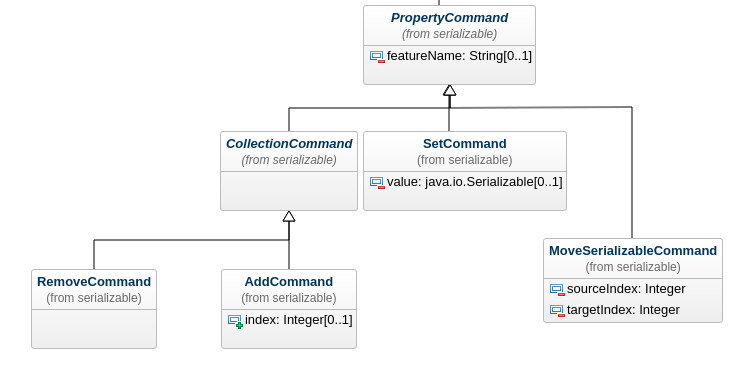MDE Collaboration
Temporality and Ergonomy in the Cloud, the GenMyModel Solution
Vincent Aranega, Axellience, France
Presentation Anatomy
|  |
Collaboration and MDE?

Modeling together: concurrent model modifications
Modeling together: non-concurrent model modifications
"Multi-Level" collaboration
GenMyModel: Quick Overview
Aug. 2012 - Web-based modeling Oct. 2012 - Model transformation chain engine Early 2013 - Model versioning Mid. 2013 - Collaborative modeling Feb. 2014 - User Model transformation chain from Github Sep. 2014 - Reverse engineering
GenMyModel: Technos
- Client side
GWT-2.7 (soon 2.8, perhaps 3.0!)
EMF and EMF-GWT
Antlr4-GWT
- Server side
Tomcat Server
EMF
QVT-o, Acceleo…
NO JavaScript (almost)
Present
Scheduling the present
Collaboration & Ergonomy Problem
How to work on the same resource?
Which collaboration protocol/topology?
How should I modify my model?
Should I be able to make mistakes?
User and Transformations
- User
Real person performing "atomic" model modifications on a same resource (create…)
- In-place (
in-out) M2M Program performing "complex" model modifications on a same resource (set of create…)
User and inout model transformations are not so different
Atomic modifications
Partially based on EMF commands (API Rest & client exec)
Single modification/command (set, add…) on a model element

Group of modifications
Gather many single Atomic modifications at once
Regarding the domain model, a group can be considered as "Atomic"

Collaborations topology
Conflict resolution is (kinda) easy
Concurrent modifications
The client "ask" for a modification → server plays it first. If it approve, the modification is sent to each client.
User and Transformation again
manual modifications VS the shell (OCL-ish based M2M)
Conflicts?
Ressource access → mutual exclusion
Ergonomy → no client lock (transparent)
Concurrent vs Non-Concurrent
Past
Understand the past
Collaboration & Ergonomy Problem
How can I see past modifications?
What information do I need?
Fine grain traceability
History

In the real world of true real reality
Back to reality
289.604 users, 345.127 projects (281.845 active projects)
Back to reality
Security | Performances | Cost |
|
|
|
- Solutions
cloud & REST API → at least 3 machines (1 Main API, 1 Editor, 1 Generation Engine) & adaptive configurations
Efficient Collaboration?

Future (work)
Tame the Future
|
Branch Management
Give the proper tools to handle future modifications
Differentiate actions with a domain specific semantic (ex: ui moves)
Multi-level Collaboration
Collaboration on same project but different resources
Soooo… git? (1/2)
Present | share modification |
|
Past | view history |
|
Soooo… git? (2/2)
Future | work on branch |
|
Modifying the Past | build a new present |
|
Yes, but
Always atomic modifications (user)
More complex modifications (transformations)
Semantic-full traceability
Opens new perspectives for Multi-level Collaboration
Finally
API for collaborative modeling based on basic commands
User ~= Transformation
Will release some parts as open-source (WIP)
Large public models DB ready for analysis (used by some Universities)
Questions?

